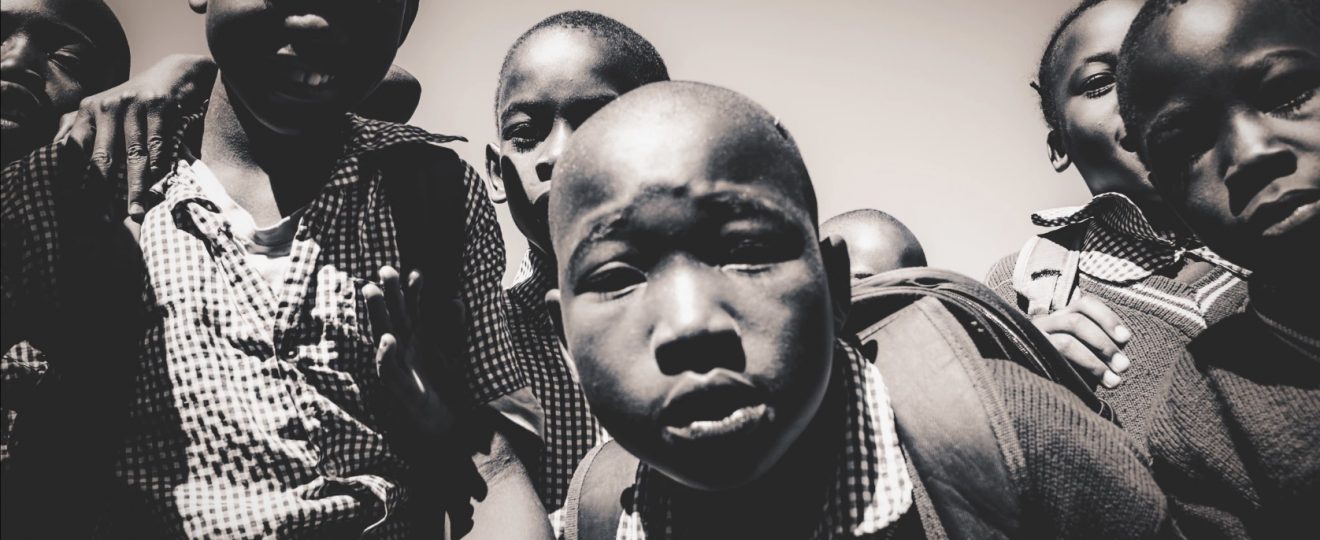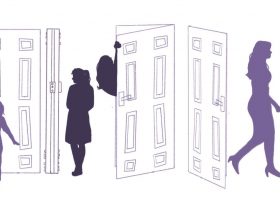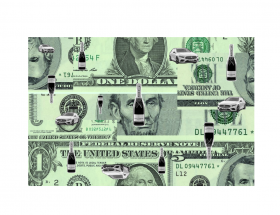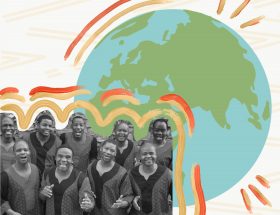A good photograph is defined by the attention it pays to its technical elements. It plays with lighting or its subject in order to craft a story for its viewer.
A great photograph, however?
According to Glen Kennedy, a student at the University of St. Andrews originally hailing from Glasgow,
“A great photograph will have a viewer return to that photograph again and again.”
While Glen works primarily in the field of cinematography, his most recent photo-journalism project, titled Faces of Zambia, grabbed the attention of BRIZO for the brilliant ways in which it captures the various individuals Glen encountered whilst abroad.
But how did he get started?
“I did some travelling in the summer of 2015, before coming to St. Andrews, during which I would capture and edit photos on my phone. I remember feeling restricted by my phone camera, but I was also being complimented on my shots, and a camera began to feel like something worth investing in. It wasn’t until the following summer that I got my Sony A7s (the camera I still use and shot the Faces of Zambia project on).”
When asked if he has any visual artists whose work is of particular meaning to him creatively, Glen jested that his list could be very long.
“As I said my interest in visual art has probably come from my love of cinema and the cinematography work of Hoyte van Hoytema (Interstellar, Her), Roger Deakins (Blade Runner 2049) and Emmanuel Lubezki (The Revenant, The Tree of Life) amazes me.
Roger Deakins is a master of the silhouette shot and so I tried to capture a couple of silhouette shots for this project, using the sun as a natural backlight.”
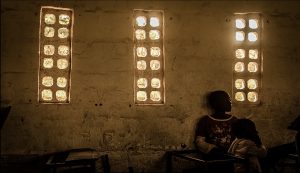
“In terms of photographers that I like, I think the work of Dennis Stock was excellent. If you’re into photography or film, I’d recommend checking out his work with James Dean.
I also think the work of conflict photographers like Hugh Van Es is extremely important. I had the opportunity to visit the War Remnants Museum in Ho Chi Minh City in Vietnam and the gallery they have of wartime photography is incredible, if not difficult to look at.”
What do you draw your inspiration from in particular? What does your photography attempt to convey?
“When shooting, inspiration comes from people and what’s in the world around me. I’m definitely a cinephile (I study Film Studies and Psychology) and had wanted a camera that had good qualities for shooting video. Whilst I really enjoy film studies, I wanted to gain a practical skillset as well during my studies here [University of St Andrews]. In developing those practical camera skills I’ve had the opportunity to go and film in Thailand, Zambia and Rwanda so it’s definitely been door-opening for me.”
“I think we all see things in different ways, so it’s nice to have the opportunity to capture something as I see it and share that with others. If what you capture is aesthetically pleasing or beautiful then all the better, but if you can capture a person’s personality or a place’s atmosphere in a photograph then I think you’ve done something pretty special.”
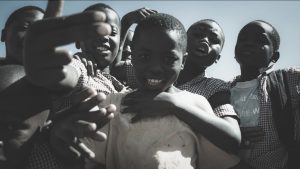
What is your editing process like?
“I edit using Lightroom and have always edited in such a way as to best serve the image itself. This is why the colour tones, contrast and even aspect ratio varies with each photo in the Faces of Zambia project.
I now have a small collection of presets that I’ve built and so often apply one I feel is closest to what I want the image to look like and then make the necessary adjustments. This just speeds up the process. The more you edit the more you manipulate the image and I think you can lose authenticity if you overdo this.”
What is the story behind the “Faces of Zambia” project?
“I went to Zambia for three weeks in June with the Wallace group charity as a media representative with the intent of shooting a cinema vérité style documentary of the humanitarian work they were doing. The Wallace Group charity aims to train students from seven partnering Universities as sports leaders, and then they travel to deprived areas of Lusaka to help local volunteers organise and run a wide range of sports and physical activities.
Before going out to Zambia I had spoken to a documentary director Daniel McCabe over email about how I could bring my own voice to my filming in Zambia. I really wanted to capture something beyond just showcasing the humanitarian work of the Wallace Group charity, but also the essence of Zambia and her people as I experienced the country. I think that creative intent is what drove the photography aspect of the trip.”
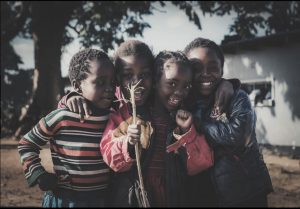 “I found that the children especially were very drawn to my filming and would often ask for photographs so that they could then see their own image on the screen. Whilst I’m still working on a short documentary edit from my time in Zambia, I realised early on that some of my favourite images would be the stills I captured in these moments. It’s the best of these candid and created moments that make up my Faces of Zambia project.”
“I found that the children especially were very drawn to my filming and would often ask for photographs so that they could then see their own image on the screen. Whilst I’m still working on a short documentary edit from my time in Zambia, I realised early on that some of my favourite images would be the stills I captured in these moments. It’s the best of these candid and created moments that make up my Faces of Zambia project.”
In terms of knowing what makes a photograph taken a good one, Glen said that “beyond little technical things like focus, exposure or framing, it’s usually a gut response.”
But for those of you who feel that your gut response is perhaps, less attuned to your lens than you’d like, don’t worry. In Glen’s own words, “I certainly feel I take more bad pictures (or at least just okay) than good.
A good photograph will direct a viewer’s eyes and tell a story- this can be done by manipulating light and shadows, as well as the position of the subject. A great photograph will have a viewer return to that photograph again and again.”
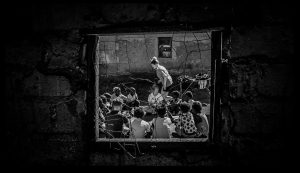
His talent in the field of photography is certainly undeniable. But does it come from some ‘natural eye’, or from the accumulation of skill?
“Definitely both. I have never studied or had photography lessons but I am an avid film watcher and have learnt for me what images I like and also dislike.
You need to learn the basics of photography, such as aperture, ISO, exposure, focus and shutter speeds, but cameras are so smart now and there’s so much information online that it has become such an accessible art form.
A different photographer could have shot the same subjects in my Faces of Zambia project in an equally compelling but stylistically very different way, and that’s one of the things that’s exciting about photography.
There are so many great photographers on Instagram and if I see an image that really holds my attention as I scroll down the Instagram feed I’ll often save and come back to them.”
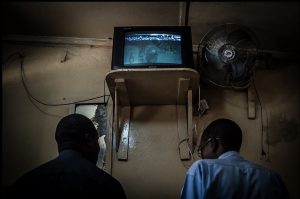
Photography certainly isn’t the only creative sphere in which Glen participates and he mentioned that it is his cinematographer mindset that remains prominent in his artistic psyche, even while capturing stills. It is those singular images that play a piece within a larger narrative he intends to weave.
“My main creative output at the moment is videography. I’m hoping to go into film production after university but also looking into video and photojournalism jobs. If you’re in the industry and reading this, then please hire me.
I will also sometimes write and compose music in my spare time, but I’ve never felt brave or talented enough to give that over to an audience. I’m a bedroom musician for now, and likely the foreseeable future.”
Upon being asked what he considers to be one of the most important things to remember in the process of creating visual art, Glen summarised a piece of advice most artists seem to agree upon, framed in a humbled and light-hearted sentiment most artists seem to share.
“Trust your gut and don’t take yourself too seriously (I probably have with this article haha).”
You can find out more about Glen and his work on his website https://gk2947.wixsite.com/jantics or through his Instagram @glenjanny .

